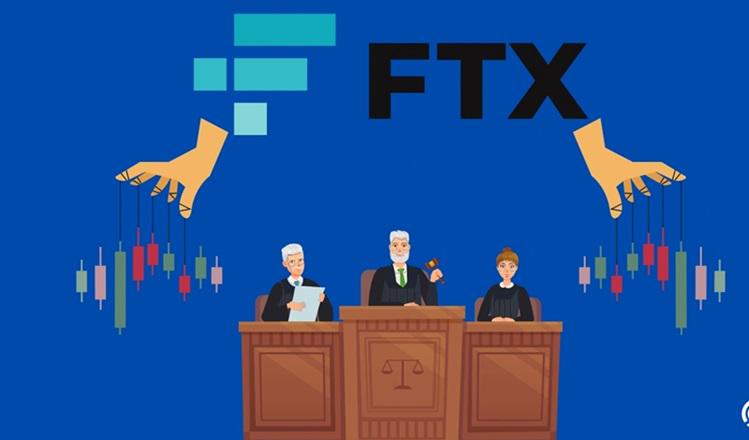 Author: Jordan, PANews
Author: Jordan, PANews
The aftermath of FTX's bankruptcy continues to impact the cryptocurrency market. As related lawsuits deepen and more information is disclosed, some unknown insider details are slowly coming to light.
According to FTX creditor Louis Origny on the X platform, a lawsuit against "smart, greedy, organized" criminal Nawaaz Mohammad Meerun has drawn community attention. This individual's methods are extremely crazy, even unbelievable, but FTX's various "shenanigans" are equally perplexing.
This article will deeply analyze this incident, which may provide some warnings for the crypto market.
Massive Accumulation of Low Liquidity Tokens, Driving Up Prices, Then Using Them as Collateral to Borrow Huge Amounts from FTX
According to the lawsuit documents from the U.S. Bankruptcy Court in Delaware, Meerun is a citizen of Mauritius and a "veteran" of market manipulation. He primarily focuses on low liquidity tokens for market manipulation and has been involved in various money laundering operations and Ponzi schemes over the past decade, with connections to organized crime networks in Poland, Romania, and Ukraine, as well as Islamic extremist networks.
Starting in January 2021, Meerun accumulated a large position in BTMX (a platform token linked to BitMax), buying about half of the total BTMX token supply, which resulted in the token's price skyrocketing by 10,000% within three months.
Subsequently, Meerun exploited FTX's leverage features and margin trading rule loopholes, using BTMX as collateral to borrow tens of millions of dollars from FTX. At this point, BitMax noticed the issue and contacted FTX to issue a warning. However, perplexingly, FTX did nothing! It is reported that Ryan Salame, then co-CEO of FTX Digital Markets, received alerts about suspicious activity but ignored them. When the scale of the loophole was later discovered to be at least $400 million, Ryan Salame merely commented, "Oh, I didn't realize the account had become so crazy."
Reportedly, between August and December 2021, Meerun used new accounts and aliases to repeat the above operations with low liquidity tokens BAO, TOMO, and SXP. Before FTX realized the problem, he had already defrauded nearly $200 million through joint market manipulation. It was only when Meerun attempted to manipulate another token called KNC that he was discovered.
According to the lawsuit documents, Meerun was well aware that once the market manipulation stopped, the price of BTMX would plummet, meaning he would be required to return all "borrowed" assets. However, Meerun clearly had no intention of complying with FTX's rules. Over time, he also withdrew a large amount of stablecoins and other tokens. It was only at this point that FTX realized the loophole was enormous, so they locked Meerun's account. Yet, inexplicably, FTX "forgot" to stop Meerun's withdrawal function, allowing him to easily transfer over $450 million obtained from market manipulation!
According to the information disclosed in the lawsuit documents, FTX did not want the outside world to discover such a huge loophole on its platform, so it used the old trick of "robbing Peter to pay Paul" to cover up the fact, shifting the losses to its sister company Alameda Research.
Using Short Selling Strategies to "Force" Alameda Research to Inject Huge Funds to Close Positions
The lawsuit documents also point out that because Meerun's actions on FTX were not addressed promptly, he gained a lot of time to "be allowed" to operate more tokens on the FTX platform. It is claimed that he shorted a worthless underground bird droppings coin, Mobile Coin (MOB), and FTX similarly did not take any action against Meerun, merely requiring him to provide more collateral.
In addition to Meerun holding a large short position in MOB, Alameda Research also held a significant number of short positions. To cover these short positions, Alameda Research began purchasing large amounts of MOB tokens from the market. During Alameda's weeks-long buying spree, the price of MOB skyrocketed by 750%, forcing Alameda to bear the cost of the significant price increase. Shortly after Alameda slowed its buying frenzy, the MOB token ultimately collapsed. By the time the BTMX/MOB incident settled in August 2021, Alameda personnel estimated that Meerun's actions had caused losses of up to $1 billion for Alameda.
However, Meerun does not acknowledge FTX's accusations of market manipulation and claims that FTX's statements are unfounded and lack evidence. He stated, "I have always operated within the limits set by the FTX exchange, and I have not received any preferential treatment regarding my FTX account. The fact is that the amount deposited in the FTX account far exceeds the amount ultimately withdrawn, which means that trading on FTX is actually a loss for me. I have no connections to any organized crime networks, nor do I have any ties to extremist or terrorist networks, and I have never provided them with funding."
Of course, Meerun's statements should not be fully trusted, as according to the lawsuit documents, he was allegedly involved in a "governance attack" on the lending platform Compound Finance under the identity of "Humpy the Whale," attempting to transfer over $20 million in assets from other protocol users by accumulating a large amount of COMP tokens, ultimately reaching a "peace treaty" with Compound in exchange for additional rewards to cease attacking the protocol.

What Lessons Can Be Learned from This Incident?
Meerun's market manipulation methods can be simply summarized in three points:
Initially accumulate a large amount of low liquidity tokens, causing the prices of related tokens to rise, then use these tokens as collateral to borrow funds from cryptocurrency exchanges and cash out;
Establish a large number of short positions to force Alameda Research to take over and inject huge funds to close positions;
Jointly buy multiple low liquidity tokens, repeating the market manipulation method of "driving up prices and then using them as collateral to borrow huge amounts from FTX."
As the details of Meerun's lawsuit are disclosed, it undoubtedly serves as a profound warning for the crypto industry, but it also provides valuable lessons:
For exchanges, there is a need to continuously improve KYC procedures, strictly enforce "Know Your Customer" and "Anti-Money Laundering" regulations, and conduct comprehensive verification of user identities to prevent criminals from using the platform for illegal activities. Additionally, there should be strengthened supervision of internal personnel, establishing sound internal control mechanisms, and conducting regular training for employees to prevent internal personnel's "inaction" from providing opportunities for criminals. Furthermore, exchanges must establish a sound risk assessment system, regularly assess business risks, identify potential risks, and take corresponding measures, especially strengthening monitoring of cross-account and margin trading, with a focus on low liquidity assets.
For investors, it is essential to be vigilant about abnormal price fluctuations in low liquidity tokens, pay attention to large on-chain transfer activities of whale accounts for sensitive tokens, and prioritize choosing trading platforms that operate within regulated jurisdictions and have obtained relevant regulatory agency certifications.
免责声明:本文章仅代表作者个人观点,不代表本平台的立场和观点。本文章仅供信息分享,不构成对任何人的任何投资建议。用户与作者之间的任何争议,与本平台无关。如网页中刊载的文章或图片涉及侵权,请提供相关的权利证明和身份证明发送邮件到support@aicoin.com,本平台相关工作人员将会进行核查。




